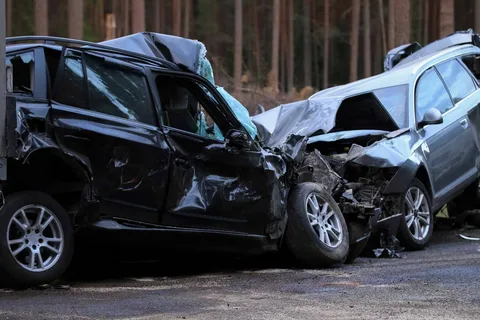On a seemingly ordinary day in Nova Scotia, something tragic unfolded that deeply touched the community and those who followed the news. I remember reading about Raymond Urbanski’s car accident and how it left a mark on me, as well as on the many who knew him or heard about the accident.
Before diving into the details of this unfortunate event, let me clarify that while I never knew Raymond personally, the news of his accident resonated with me in a way that makes it feel personal.
Perhaps it’s because of the close-knit nature of communities like Nova Scotia, or maybe it’s just the universal human experience of loss. Either way, I felt compelled to explore this story further, to understand its details, and to reflect on the broader implications of road safety, community solidarity, and the fragility of life.
The Tragic Event: What Happened in Nova Scotia
The Car Accident
The car accident involving Raymond Urbanski in Nova Scotia was a shocking and devastating event. While the exact details of the crash were not fully publicized due to privacy concerns, what we do know is that it occurred on a remote stretch of road—one that unfortunately sees its fair share of accidents.
Nova Scotia’s scenic roads, while beautiful, can sometimes be dangerous, particularly during adverse weather conditions or when drivers are unfamiliar with certain roadways.
From what I gathered through various news reports, Raymond Urbanski was involved in a single-vehicle accident. The car, for reasons yet to be fully determined, lost control and veered off the road.
Emergency responders were called to the scene, but unfortunately, Raymond did not survive the crash. The loss of life in any car accident is always heartbreaking, but when it happens to someone in such a sudden and shocking manner, it leaves an emotional scar on everyone involved.
Road Safety in Nova Scotia
For those who may not be familiar, Nova Scotia’s roads can be quite challenging. While the province is known for its stunning coastal drives and scenic landscapes, there are parts of Nova Scotia where the road conditions can turn dangerous.
Some stretches of highway are narrow, with sharp turns, steep inclines, and unpredictable weather patterns that can cause slick road surfaces. As someone who has driven through Nova Scotia, I can attest to how quickly conditions can change.
Many accidents, like Raymond Urbanski’s car crash, tend to happen in these more rural and isolated areas. Visibility can drop rapidly due to fog or rain, and wildlife can appear suddenly in the middle of the road, causing drivers to swerve or lose control.
Despite the beauty of the landscape, it’s crucial to remain vigilant at all times while driving, especially when navigating less-traveled routes.
My Reflection on the Community Response
What struck me most about this tragedy was the response of the Nova Scotia community. After the accident, there was an outpouring of condolences and support for Raymond’s family and loved ones. It reminded me of the strength and unity that smaller communities like those in Nova Scotia often exhibit in times of crisis.
When tragedy strikes, people come together, offering support, whether emotional, financial, or practical. In Raymond’s case, there were community vigils held in his memory, as well as fundraisers organized to help his family with funeral expenses and other needs.
Living in a similar small town, I understand the importance of that sense of belonging and shared experience. It’s something we often take for granted, but when something tragic happens, you realize how much a community can pull together. The solidarity and kindness extended to Raymond’s family after the accident are a testament to the values of Nova Scotians—values of compassion, empathy, and resilience.
Road Safety Awareness: Lessons Learned
As I reflected on Raymond’s accident, I couldn’t help but think about how many lives are impacted by car accidents every year, not only in Nova Scotia but globally.
According to Transport Canada, there were approximately 1,762 motor vehicle fatalities in the country in a recent year, with many more injured. These statistics are sobering, especially when you realize that many accidents, like Raymond’s, might have been preventable under different circumstances.
Weather and Road Conditions
One of the critical factors contributing to accidents in Nova Scotia is the weather. The province experiences harsh winters, and roads can be icy and treacherous, particularly in rural areas. I’ve personally had my share of close calls on snowy or rain-soaked roads. It’s easy to lose control, especially when you least expect it.
Winter tires and proper vehicle maintenance are essential when driving in such conditions. I always ensure my tires are in top condition and that I carry emergency supplies in my car, especially during the winter months. Having chains, extra blankets, and a first aid kit on hand can make all the difference in case of an accident or if you’re stranded.
The Importance of Defensive Driving
Another critical factor to consider is driving behavior. As someone who drives regularly, I’ve noticed that many accidents happen due to reckless or distracted driving. It’s not always easy to stay focused, especially on long stretches of road, but defensive driving can save lives.
I remember reading about how Raymond Urbanski’s accident brought attention to this very issue. Even if you are driving responsibly, there’s always the risk posed by other drivers or unpredictable road conditions.
That’s why it’s essential to practice defensive driving—always stay aware of your surroundings, maintain a safe distance from other vehicles, and adjust your speed according to road and weather conditions. These simple habits can significantly reduce the risk of accidents and save lives.
The Broader Impact of Car Accidents
Raymond Urbanski’s accident serves as a stark reminder of how fragile life can be and how quickly it can change. Car accidents, like this one, not only affect the individual involved but also have a lasting impact on families, friends, and entire communities. I’ve seen firsthand how families are devastated by the sudden loss of a loved one, and it’s something you never truly recover from.
For Raymond’s family, I can only imagine the immense pain they must feel. Losing a loved one so unexpectedly is heartbreaking, and the grieving process can be long and challenging.
In the days following the accident, I read that many people in the Nova Scotia community reached out to support Raymond’s family, offering their condolences and helping with practical matters. This act of kindness speaks volumes about the resilience of communities and how they come together in times of need.
Raising Awareness for Safer Roads
Since the accident, there has been an increased emphasis on road safety initiatives in Nova Scotia. Local authorities and community leaders have called for improvements to road infrastructure, better signage, and stricter enforcement of traffic laws. While these measures won’t bring Raymond back, they serve as a critical step toward preventing future tragedies.
I’ve also noticed a rise in awareness campaigns about the importance of safe driving. These campaigns aim to educate the public on how to stay safe on the road, emphasizing key issues like wearing seatbelts, avoiding distractions, and driving responsibly in poor weather conditions. In light of accidents like Raymond Urbanski’s, these messages carry an even greater sense of urgency.
Conclusion:
The tragic car accident involving Raymond Urbanski is a stark reminder of the dangers we face on the road every day. While we can’t predict or prevent every accident, we can take steps to improve road safety and reduce the risks.
For me, hearing about Raymond’s accident made me more mindful of my own driving habits and the importance of being prepared for unexpected events while on the road.
While this tragedy deeply affected the Nova Scotia community, it has also sparked important conversations about road safety. It is my hope that through continued awareness and action, we can prevent similar accidents in the future and honor the memory of those like Raymond, whose lives were cut short far too soon.







